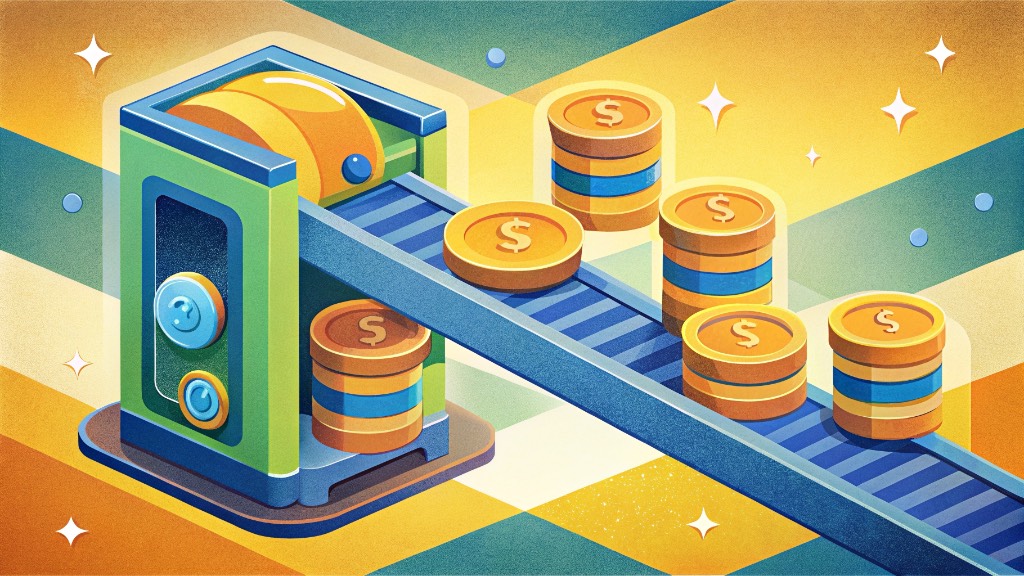
The Step-by-Step Story of Turning a Crypto Idea Into a Traded Token
The buzz around memecoins and altcoins in the cryptocurrency world is louder than ever. For many, these digital tokens start as an internet joke or a community craze, only to become hot commodities traded by thousands worldwide. But how does a simple idea for a meme-inspired coin turn into a real cryptocurrency listed on exchanges? Understanding this path from concept to coin is essential for enthusiasts, future developers, or anyone curious about the new digital economy. This detailed guide walks through the journey step by step using clear language for beginners.
1. The Spark: Where Altcoin Ideas Begin
Almost every memecoin or emerging altcoin starts as a spark of creativity. Sometimes the founders want to solve a specific problem or launch a faster currency. Other times, they simply want to have fun, satirize internet culture, or harness an existing meme for community engagement.
- Memecoins, in particular, often begin on social media platforms or internet forums. A viral tweet, meme image, or inside joke can inspire someone to say, “Let’s make a coin about this.”
- Altcoins with more technical goals might form after brainstorming sessions among developers who want to improve upon Bitcoin or Ethereum or innovate with new blockchain features.
At this stage, the project is usually nothing more than a loose idea, a name, or maybe a rough logo.
2. The Whitepaper and Mission
To move from idea to something real, founders must clarify the purpose of their coin. This is where the whitepaper comes in. A whitepaper is a document that explains what the coin will be, how it works, and why people might want to use or hold it.
- The whitepaper details the project’s goals, tokenomics (the rules for supply and distribution), technical features, use cases, and roadmap.
- Even joke coins often release a playful whitepaper that covers the basics in a clever or entertaining way.
Writing a whitepaper helps build trust and makes it easier for potential investors and community members to understand the project’s direction.
3. Creating the Token or Blockchain
At this key stage, a team of developers brings the coin to life with code. There are two main pathways:
- Launching on an Existing Blockchain: Most memecoins and early-stage altcoins are created as tokens using existing networks like Ethereum, Binance Smart Chain, or Solana. Developers use established standards (such as the ERC-20 or BEP-20 token type) to create a smart contract that defines the new coin’s rules. This process can be done in a few hours with basic programming skills and the right tools.
- Building a New Blockchain: Some ambitious projects create an entirely new blockchain network. This is much harder, requiring experienced programmers, unique software, and sometimes months or years of research and development.
For most popular memecoins, launching as a token is faster, cheaper, and provides immediate compatibility with popular crypto wallets and exchanges.
4. Tokenomics: Setting the Rules
Every altcoin must decide its supply mechanics, distribution, and incentives. These are called the “tokenomics” of a project.
- How many total coins will be created? Will it be a fixed number or can new coins be minted later?
- How will the coins be split up? Founders, developers, community members, and early supporters often receive a set allocation.
- Are there special features, like automatic burns, reflection rewards, or staking incentives?
Clear, transparent tokenomics builds community trust and can help prevent scams or pump-and-dump schemes.
5. Building the Community
No memecoin or altcoin thrives without a passionate user base. After launching the token’s smart contract, the founders begin spreading the word.
- They create official social media channels, Discord servers, Telegram groups, or Reddit communities.
- To generate interest, memes, challenges, and giveaways are widely shared.
- Community members are encouraged to become unofficial ambassadors, spreading excitement and recruiting new fans.
Viral marketing and word-of-mouth play a huge role in the success of new coins, sometimes making them popular overnight.
6. Liquidity and Listings: Getting on the Market
For a coin to be bought and sold, it needs liquidity and exchange listings.
- The team often adds an initial batch of tokens to decentralized exchanges (DEXs) like Uniswap, PancakeSwap, or Raydium. Liquidity pools are created by pairing the new token with a popular coin such as Ether or Binance Coin.
- Once there is trading activity and a supportive community, centralized exchanges may express interest in listing the coin. More listings mean better visibility and easier access for new users.
- Occasionally, exchange listings are facilitated by widespread demand or creative promotional strategies.
For most altcoins, the goal is to generate enough interest to become listed on multiple exchanges, increasing legitimacy and value.
7. Marketing and Memes: Keeping the Energy Alive
In the world of memecoins, marketing often relies on humor, creativity, and viral campaigns.
- Eye-catching graphics, videos, and challenges flood social channels.
- Influencers or celebrities sometimes join in, helping to send the coin trending.
- Community milestones, like reaching a set number of holders or trending hashtags, are celebrated as mini-victories and attract further attention.
Branding, image, and fun are every bit as important as technical substance in the meme space. Altcoins with more serious missions focus on partnerships, product releases, or technological milestones instead.
8. Encouraging Adoption and Real-World Use
Once trading begins, the founders and core community look for ways to make the coin useful or desirable.
- Merch stores, online games, tip bots, and exclusive communities are common early uses for memecoins.
- Altcoins with special technical features may enable online payments, decentralized finance tools, or NFT platforms.
- Some coins reward holders with extra tokens or a share of transaction fees.
Real adoption builds staying power beyond the first wave of hype.
9. Governance and Future Development
As a coin grows, decentralized governance can help guide its future.
- Some projects airdrop voting tokens or hold periodic referendums so the community steers development or marketing plans.
- Others continue centralized leadership with founders making big-picture decisions but taking feedback from the user base.
- Developers might roll out technical upgrades, new partnerships, or innovative features to keep the community engaged and the project competitive.
Evolving governance models help maintain activity and prevent stagnation.
10. Risks and Common Pitfalls
The process sounds simple, but there are important risks and challenges at every stage.
- Reputation damage from scams or undelivered promises
- Price volatility and potential for sudden losses
- Legal and regulatory uncertainties depending on region
- Technical bugs in smart contracts or poor tokenomics that can be exploited by attackers
Responsible founders address these issues with transparency, audits, community communication, and ethical leadership.
How a Meme or Altcoin Comes to Life and Survives
The journey from joke or brainstorm to actively traded altcoin combines creativity, coding skill, clever marketing, and genuine community spirit. While some memecoins crash as quickly as they appeared, others gain real economic value and cultural influence. Altcoins that begin with a technical vision may introduce new features or solve challenges left by previous cryptocurrencies, impacting the entire ecosystem.
For anyone dreaming about launching a new coin, it takes more than just a clever logo or a trending hashtag. You need technical know-how, a strong sense of community, a transparent plan for distribution, and relentless energy for promotion and adaptation.
At their best, altcoins and memecoins show the power of digital crowds and open-source innovation. At their worst, they highlight crypto’s need for responsible leadership and user education. As this ecosystem continues to expand, understanding how these coins are born and what it takes to thrive is key for both participants and observers seeking to navigate, invest, or just enjoy the internet’s wildest financial frontiers.















